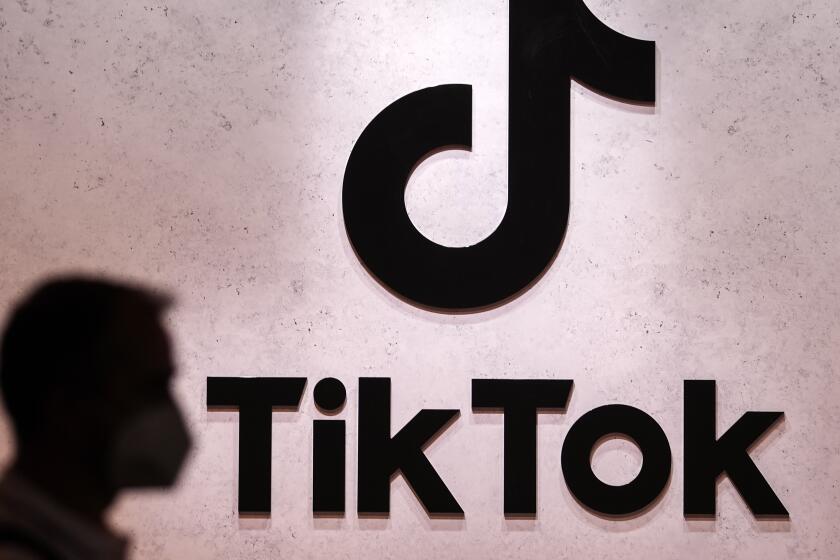OUTLOOK ’87 : Growth or Slowdown? : Challenges Will Continue to Face Computer World
The question in the minds of everyone involved with computers is whether 1987 will be a year of renewed growth or the third consecutive year of an industry slowdown.
Some look for growth to reach above the 15% rate of 1985, while others believe that the growth will be closer to the 6% or 7% of 1986.
In any case, the new year will certainly find new competitive forces in the industry and opportunities for creative companies to further expand their market opportunities. The new year should also represent a year of opportunity for both the users and vendors of computer products in San Diego.
Quite a few challenges confront the computer business.
The first and foremost is the introduction of “friendlier” systems that permit unskilled people to effectively use the computer.
Second, there is the need to connect different computers. The introduction of international communications standards has been a powerful adjunct in making this happen, but the standards will not be fully implemented until the end of the decade. This will cause a further proliferation of specialized solutions based on some level of de facto standards.
The bulk of the computer business in the United States is still centered largely in Silicon Valley, Boston, and in other sites where major manufacturers such as International Business Machines have plants.
San Diego has not yet become a major center for computer technology, but it provides significant adjunct services to the industry.
An analysis of the ingredients of a strong center for computer research finds:
- At least one strong research university that fosters the free flow of creative new product ideas to companies. Large corporations have been able to duplicate this flow of information from their own laboratories.
- Rich adjunct universities that ensure the engineers and programmers a source of continuing education in their fields.
- A synergistic relationship among suppliers in the local business community. Peripheral vendors often spring up around computer manufacturers.
- A social/professional interaction of engineers and scientists that permits a sharing of technology and ideas.
- A capital market that helps to stimulate new companies.
- A cadre of skilled executives capable of forming and running competitive computer companies.
San Diego is beginning to benefit from the continued growth of a strong computer-related business community and from the growing interest in computers and electronic engineering in the nearby universities. Several key names in the computer business have located laboratories or plants in San Diego County, and small companies have entered and been successful in computer-related businesses. These movements have begun to change the numbers and mix of professional and executives available in the community.
The growing rate of UC San Diego’s research work should prove a strong growth factor in San Diego’s continued impetus in computer-related companies. Specifically, the creation of the Supercomputer Center and the Center for Magnetic Recording Research on the campus should serve as valuable stimuli for further computer business in the community.
In addition, graduate and undergraduate courses provided by San Diego universities will help to ensure a flow of skilled engineers and programmers. The recent announcement of University of San Diego’s electrical engineering department will be an important addition to the already existing capabilities.
Several other segments of the computer industry will undergo changes and face challenges in 1987:
- Technology breakthroughs are continuing to drive down computer prices. This trend will continue to affect personal computers and engineering work stations in 1987, although there probably will be some moderation in the overall downward thrust. Personal work stations will emerge this coming year based on new powerful chip capabilities from Intel, Motorola and others. Using the power of the new chip technology, coupled with superior color terminal capabilities, color graphics are becoming a fundamental part of both engineering and business work stations. This broad acceptance opens new opportunities to graphics suppliers, but also challenges them to enhance overall quality and provide low-cost capabilities to the work station users.
- The competition in the personal computer market is focusing more on the effective function available to the end user. Specifically, the connection of personal computers to each other and to large host computers has become an important factor in corporate buying decisions. There is a clear need for small computer vendors to provide a method of interconnection and interchange of data, but most of the vendors will ride on either industry standards or the de facto standards of large manufacturers.
- In mid-range computers, 1987 will probably see a replay of the intense competition of 1986. Again, the ability to move data across different computers and to communicate among computers will play a large role in purchase decisions. The nature of shared applications in the mid-range computers will emphasize a higher degree of fault tolerance, especially in financial markets but also in manufacturing and engineering computers. Fault tolerance helps to ensure that the computer data remains available to the end user even when there is a system or programming failure.
- Technological changes are permitting the movement of functions from large computers to department or personal computers, a movement called downsizing. In 1987, a continuation of the downsizing trend is likely, as engineerring and business applications are moved from host computers to mid-range and finally to personal computers. This technology drive will affect software vendors, who must now interconnect host data with work station data. Customer computer managers are also faced with this same challenge as their end users put powerful applications on personal computers.
- Chip technology advances have opened new markets within the past year. It is now possible to put functions previously limited to laboratories directly into the working environment. A dramatic example is the introduction of the computer on the credit card, but more practically it is possible to place computers in appliances, tools, automobiles or aboard boats. Such applications will cause additional businesses in San Diego to find practical and effective uses for embedded computers in their product designs.
- An important product area--although there’s little activity in San Diego--is artificial intelligence, which mimics the attributes of the human mind. There is a large number of potential applications of artificial intelligence to the workplace. Perhaps the most widely applied area in the United States today is expert systems. Expert systems use the storage and processing power of the computer to provide intelligence normally found with a small group of experts or perhaps even beyond the normal reasoning ability of groups of experts. New engineering design products have been introduced in 1986 that provide design rules directly from the computer. In the medical field, expert systems can now provide information on the interactions among prescribed drugs.
- Storage and transmission technologies are also opening new challenges and opportunities. New capabilities in optical and magnetic recording are providing large amounts of information at each desktop computer. This information capability has resulted in new market strength for desktop publishing, and has also opened new challenges in the effective long-term storage and control of data. The use of optics has also found its way into the local office of the form of optical local area networks. This new transmission capability will speed the communication among computers.
In summary, 1987 offers an opportunity for those positioned to meet the challenge of new and easier-to-use products, whether hardware or software. It is my belief that, overall, San Diego computer companies will benefit from recent developments and plan an increasing role in the computer business.



